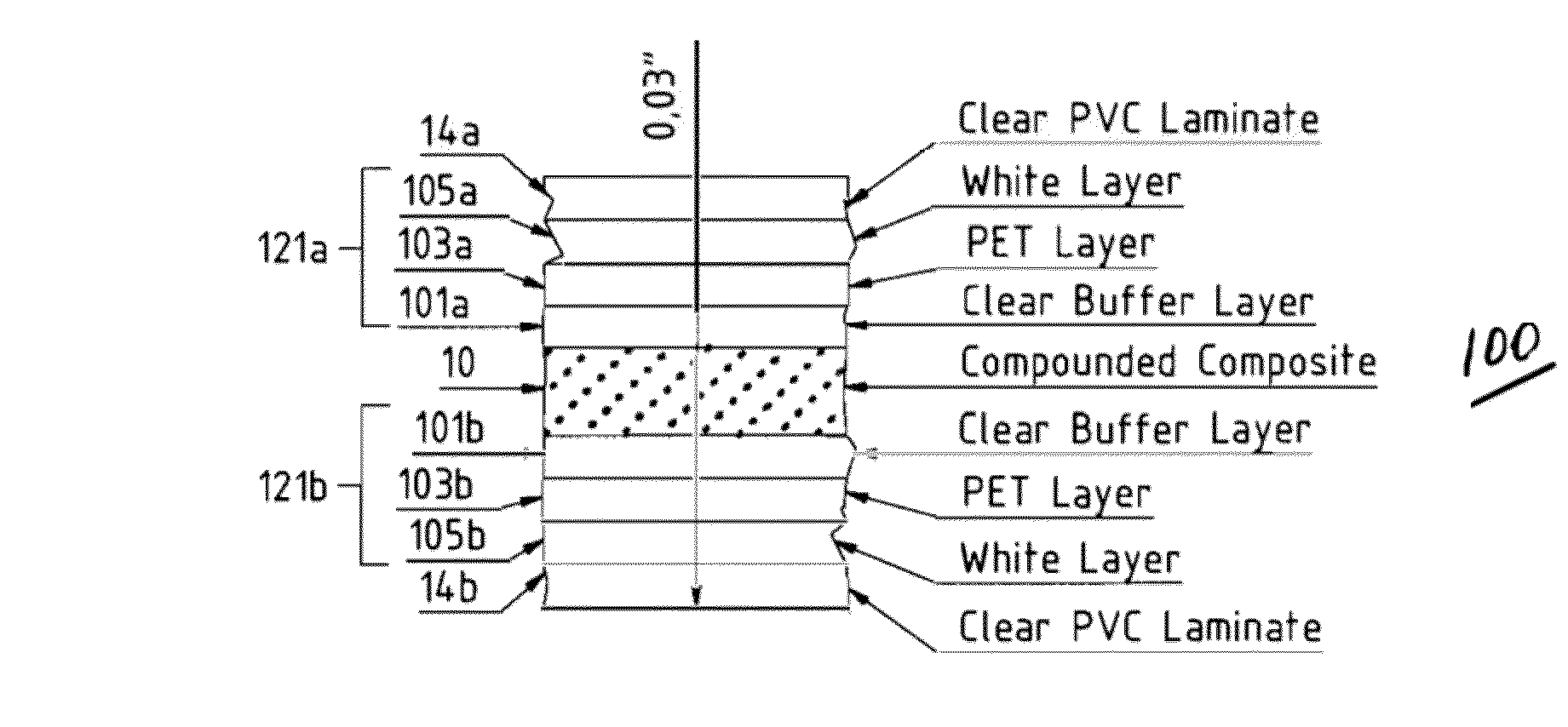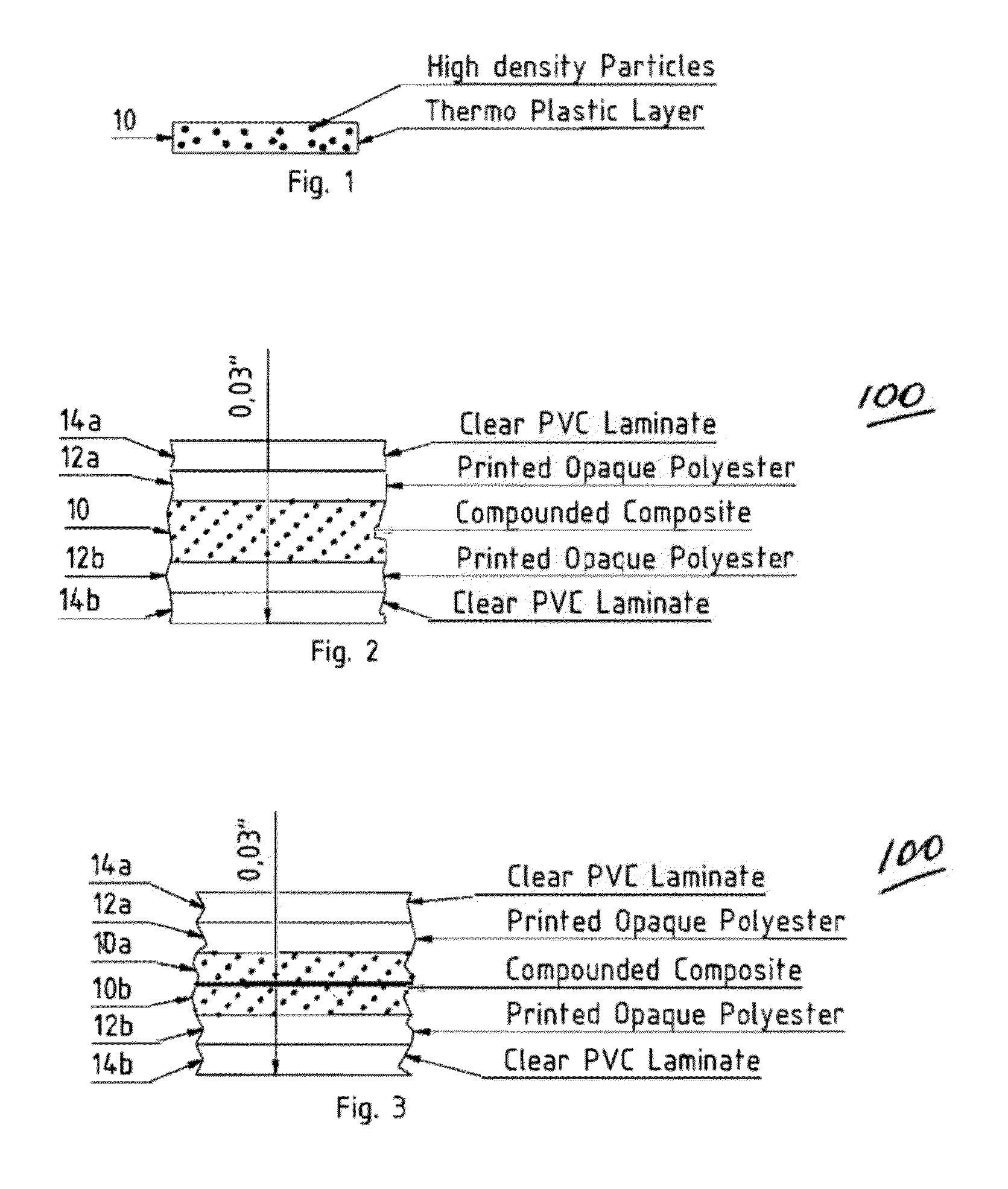Plastic cards with high density particles
a high-density, plastic card technology, applied in the direction of instruments, synthetic resin layered products, transportation and packaging, etc., can solve the problems of inability to meet the requirements of system and equipment, inability to meet the requirements of the system and equipment, so as to achieve uniform separation and distribution, increase the density of the resultant composite plastic material, and reduce the risk of electrostatic discharge into the electronic equipment used in credit card transactions.
- Summary
- Abstract
- Description
- Claims
- Application Information
AI Technical Summary
Benefits of technology
Problems solved by technology
Method used
Image
Examples
Embodiment Construction
[0032]The embodiments shown to illustrate teachings of the invention(s) should be construed as illustrative rather than limiting. Any dimensions and materials or processes set forth herein should be considered to be approximate and exemplary, unless otherwise indicated.
[0033]Dual interface cards may be discussed as exemplary of various features and embodiments of the invention(s) disclosed herein. Many features and embodiments may be applicable to (readily incorporated in) other forms of smart cards, such as contact cards and pure contactless cards. As used herein, any one of the terms “dual interface”, “contact smart card”, “contactless card”, and the like, may be interpreted to refer to any other of the devices similar thereto which operate under ISO 14443 or similar RFID standard. The following standards are incorporated in their entirety by reference herein:[0034]ISO / IEC 14443 (Identification cards—Contactless integrated circuit cards—Proximity cards) is an international standa...
PUM
| Property | Measurement | Unit |
|---|---|---|
| size | aaaaa | aaaaa |
| weight | aaaaa | aaaaa |
| density | aaaaa | aaaaa |
Abstract
Description
Claims
Application Information
 Login to View More
Login to View More - R&D
- Intellectual Property
- Life Sciences
- Materials
- Tech Scout
- Unparalleled Data Quality
- Higher Quality Content
- 60% Fewer Hallucinations
Browse by: Latest US Patents, China's latest patents, Technical Efficacy Thesaurus, Application Domain, Technology Topic, Popular Technical Reports.
© 2025 PatSnap. All rights reserved.Legal|Privacy policy|Modern Slavery Act Transparency Statement|Sitemap|About US| Contact US: help@patsnap.com



